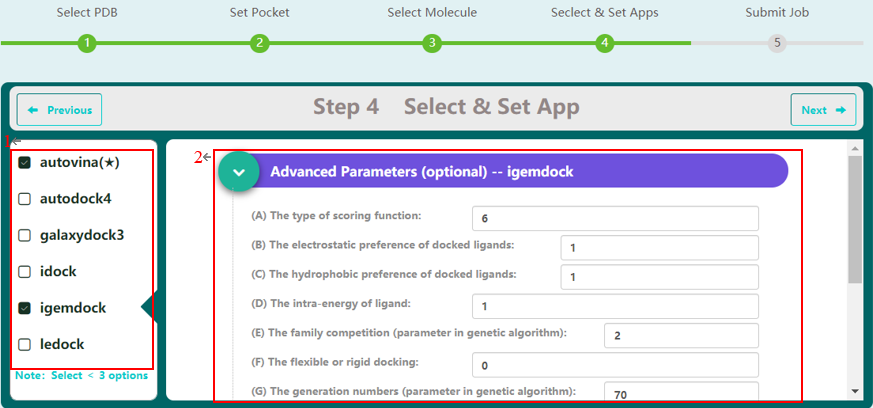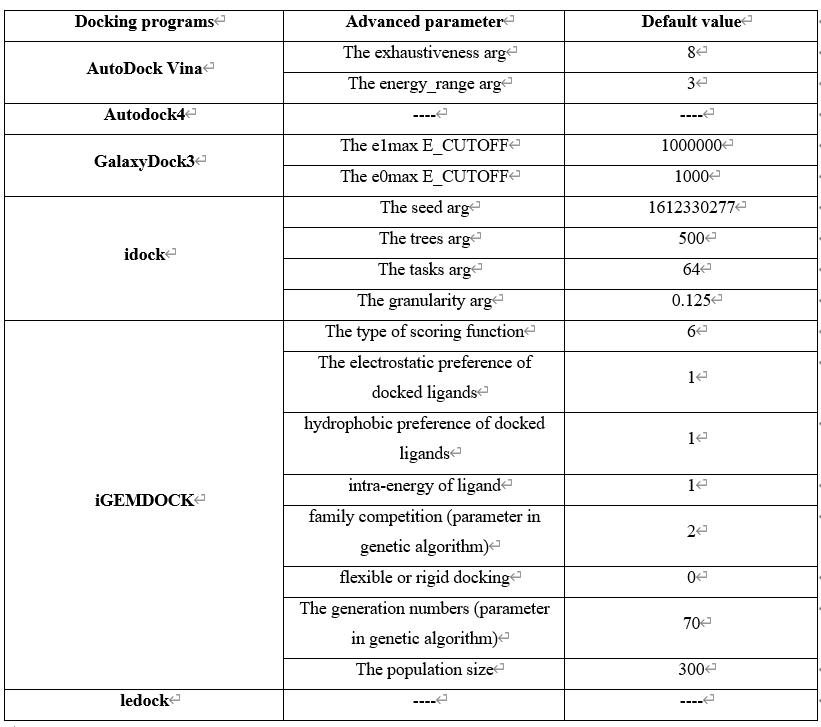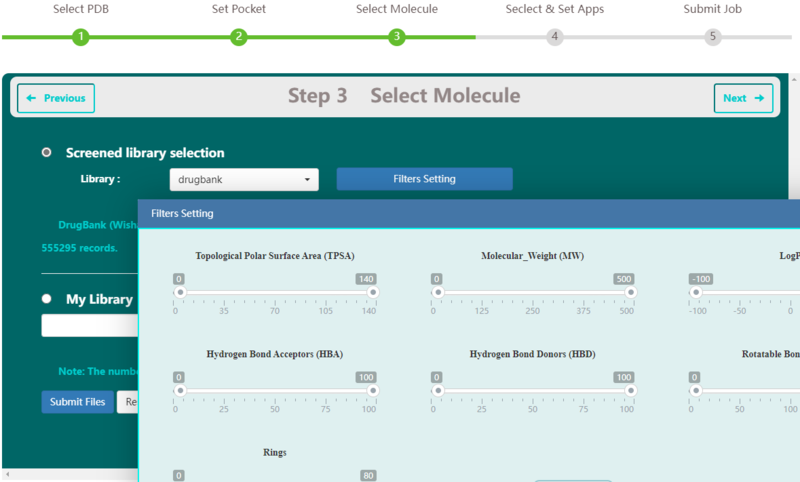Difference between revisions of "Virtual Screening"
(→Job monitoring) |
(→Job submission) |
||
| Line 32: | Line 32: | ||
== Job submission == | == Job submission == | ||
| − | <p>On Step 5, users have the option to type in their email. This email address will be used to receive the task id and get reminder when the job has been finished (Fig. | + | <p>On Step 5, users have the option to type in their email. This email address will be used to receive the task id and get reminder when the job has been finished (Fig. 5). The task id is a unique random identifier. To check job status and get results, users need to input the task id.</p> |
[[Image:Vs6.png|1000px|center]] | [[Image:Vs6.png|1000px|center]] | ||
| − | <p><center><strong>Figure | + | <p><center><strong>Figure 5. </strong>email input screenshot</center></p> |
== Job monitoring == | == Job monitoring == | ||
Revision as of 08:19, 8 November 2021
Virtual Screening Manual
VSTH can provide a complete workflow for molecular docking, including PDB file preparation, pocket setting, molecular database preparation, docking program selection, job monitoring, and result analysis and visualization.
Target protein preparation
For processing protein, the end users can follow the prompts. The protein target can be accessed by either providing a 4-character PDB accession code (1) or by uploading a PDB file (2). Users also can remove waters, ions, ligands in PDB files (3) as they want. Besides, users can hydrogenate proteins (4). There are 3 methods for adding hydrogen implemented in REDUCE package:
- add H rotate and flip NQH groups.
- add H and rotate groups with no NQH flips.
- add H, including His sc NH, then rotate and flip groups.

Pocket setting
VSTH will automatically identify pockets using fpocket and present an interactive viewer of the protein target and the best scoring pocket (1). Detailed information on the provided target (3), such as drug ability score, number of alpha spheres, total SASA and so on, can also be found on this page. Users can select the top 10 pockets identified by fpocket or input the box size and center directly (2). Then, users can define the number of poses (4)(Fig. 2).

Ligand library preparation
Step 3 allows the user to select libraries for virtual screening on VSTH. Available databases in VSTH include DrugBank (Wishart D. S., 2006), HMDB (Wishart D. S., 2007), and IBS (Ltd., 2021). DrugBank contains 2387 records. HMDB contains 113875 records. And IBS contains 555295 records. Users can filter these databases as the ligand library or upload their own ligand library. VSTH supports compressed files, such as zip file, tar file, and so on. Also, VSTH uses Open Babel (O’Boyle et al., 2011) for format transformation, as a result VSTH can support file formats like smi, mol2, mol, xyz, cif and sdf, etc. (Fig. 3).
Docking program selection
Step 4 allows the user to select docking programs and set parameters. VSTH provides 6 software for docking (1). Users can select at most 3 programs for docking. Generally, VSTH provides default parameters for docking, while users can modify parameters for personalized docking (2). All advanced parameters are provided according to docking programs and can be found in Table 2. Besides these advanced parameters, users have the option to select DLIGAND2 to predict protein-ligand binding affinity. For conformation classification, users need set the cutoff argument (Fig. 4).


Job submission
On Step 5, users have the option to type in their email. This email address will be used to receive the task id and get reminder when the job has been finished (Fig. 5). The task id is a unique random identifier. To check job status and get results, users need to input the task id.
Job monitoring
On Step 6 screen, users have the option to type in their task id, check status, get results and cancel task.

